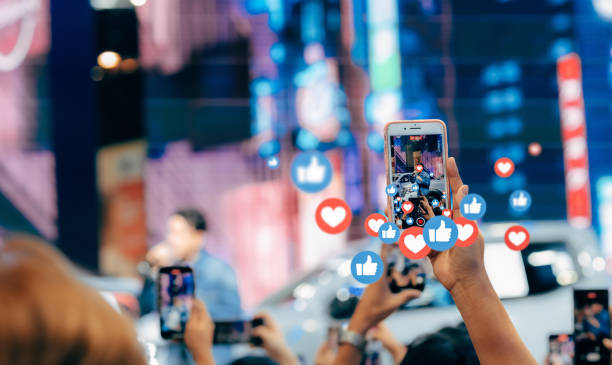
We all love and hate social media. It began as a way to share moments of your life with friends but quickly evolved into a powerful marketing tool. We wanted to know how consumers use social media to engage with brands and follow them. Not the platforms. We found some surprising information, but others were expected. We’re happy to share what we saw with you.
Social Media Use
Let’s begin with some general info. In terms of daily social media usage, the vast majority of consumers spend their time on Instagram and TikTok (1-2 hours per week). At the same time, platforms such as Facebook, Twitter, and LinkedIn are only used for 15 minutes or less per day. In addition, 27.6% said that they expected to use Facebook less by 2021. (RIP Facebook). It will be interesting to see how the usage of traditional platforms decreases with the launch 2021 of ClubHouse and Stereo. The channels where consumers are most active are those that are focused on media/news and fitness/health. They are also more likely to follow brands that are focused on food/beverage. Instagram, however, is the clear winner when it comes down to discovering new products. Over 70% of respondents said that they prefer this platform to all others for finding new products.
When is the Best Time to Post?
Let’s now dive into and when is the best time to post. Many platforms will recommend the “best time” to post based on your audience’s engagement and availability. As you probably also know, however, the exact time your followers will see your post is not the same as the time you posted. Instead of focusing on specific days and times that channels recommend, we recommend planning for the regular online hours that consumers use. The two most popular social media checking times were late evening (8 pm-11 pm) or early morning (6 am-11 am). We recommend posting during the early evening/afternoon (around 2 pm-6 pm) to give you more time for your post to rank in peak scrolling times.
What is the best type of content to post?
Let’s talk about what you should post. Is video often referred to by platforms as “the top engagement driving post type “…, but is this true? It’s not true, in our opinion. Instagram and Facebook are using it to market themselves in order to compete against other video-based platforms. Please don’t take our word as gospel. Our survey found that consumers prefer static content when it comes to hard engagements such as comments and likes. Users are 42.3% likely to “like” a static image compared to videos.
Social Media Strategy
The use of hashtags is another “hyped-up strategy”. However, hashtags are not always a good strategy for brands. 66% of Instagram users do not use hashtags, and 84% have never bought a product that they found using hashtags. These are pretty impressive stats, and not for hashtags.
Giveaways are a common strategy that brands use to promote their posts. Giveaways are a great way to engage and gain followers, but the success of these giveaways must be examined further. 26% of those who enter giveaways won’t continue to follow a brand after the giveaway is over. Around 75% of followers who are attracted by giveaways will stick around. To keep those 75% for the long term, you will need to continue posting relevant and engaging content. It is important to remember that your giveaways should always be geared towards your target audience.
If their products are relevant to me, I will continue to follow them [after the giveaway has ended]. “If they post too much or about irrelevant stuff, I will unfollow.”
Trust & Authenticity
How do you achieve authenticity on social media? In terms of social trust, consumers trust friends and celebrities the least. Surprisingly, consumers trust posts from brands’ pages more than influencers promoting a product. The days when consumers believed everything an influencer said in #ads and sponsored posts are gone. They now know that their opinion is not to be taken at face value. It is important to consider gifting campaigns for nano-influencers, who may be more trustworthy from a “friend’s” perspective.
Similarly, the following sizes do not build trust. We’ve found that while many brands want to have as many fans as possible, too many can be detrimental. A large number of followers creates a barrier between the consumer (and the brand) and the mass of followers. I am only one out of one million. Second, a large number of followers with little engagement may cause people to doubt your authenticity. The moral of the tale is to grow organically. It’s okay for you to start small.
Only 6,9% of respondents said that they would be more likely to support a brand that has over 10,000 followers.
Good news! Social media is a major influence on purchase decisions. Over 65% of those surveyed stated that they check out a brand’s page on social media before making a purchase. Nearly 70% of those surveyed also said that they read reviews, comments, and feedback from customers before making a purchase. This doesn’t necessarily mean consumers will follow you. However, it shows how important a social media presence can be in the purchasing decision. We recommend that you use page views to measure your social success. But that doesn’t necessarily mean social media can’t drive sales…88.1% said they had purchased a product after finding it on social media.
Find Success with Social Media
Social media is a great way to build your credibility and promote your brand. Keep in mind that engagement, authenticity, and trust are all important factors to encourage your followers to make purchases. Post all you like, but consider the type of material you are posting and whether it will encourage users to purchase. Use these tips from our agency the next time you are looking to revamp your strategy on social media to achieve the results you desire!





